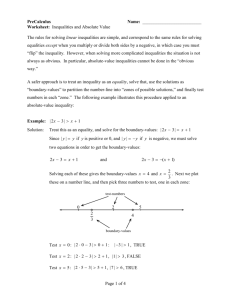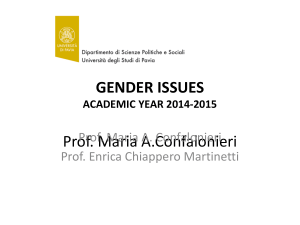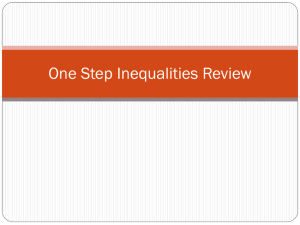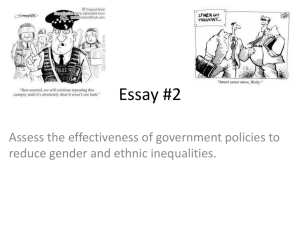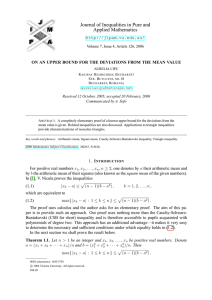KS3 Explore the Equality and Diversity in Remembrance (PowerPoint)
advertisement
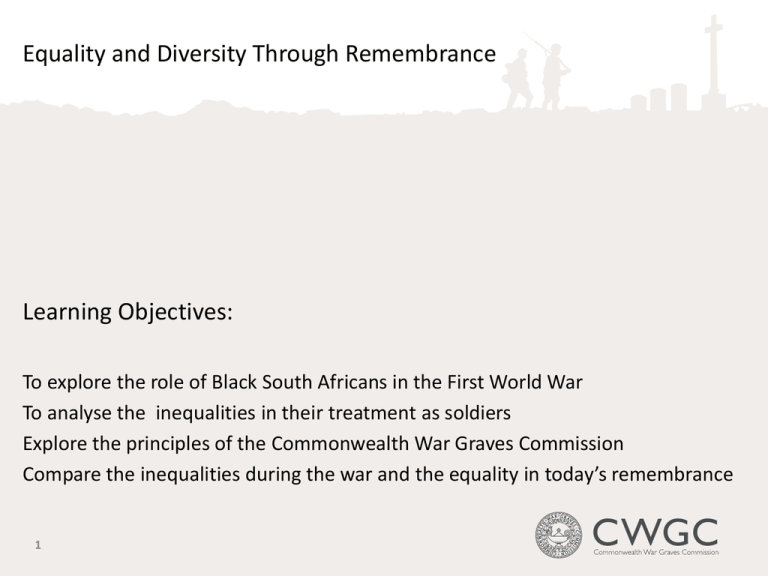
Equality and Diversity Through Remembrance Learning Objectives: To explore the role of Black South Africans in the First World War To analyse the inequalities in their treatment as soldiers Explore the principles of the Commonwealth War Graves Commission Compare the inequalities during the war and the equality in today’s remembrance 1 Now play the CWGC Let Us Die Like Brothers DVD (part three if completing all lessons, whole video if a stand alone lesson) 2 Analyse how the members of the South African Native Labour Corps were treated. As a whole class activity create a mind map on the treatment the men received. 3 The Commission's principles: • Each of the dead should be commemorated by name on the headstone or memorial • Headstones and memorials should be permanent • There should be no distinction made on account of military or civil rank, race or creed Tasks: Copy the principles in your book. Explain why you agree or disagree, with each principle. 4 Paired Work Compare the treatment of the South African men in 1914-18, to how they are remembered. Why should we remember the Native Labour Corps? Why is equality in memory important? Is it still relevant in today’s society to remember the casualties of the First World War? 5 Learning Outcomes • Have we explored the role of Black South Africans in the First World War? • Have we analysed the inequalities in their treatment as soldiers? • Do we understand the principles of the Commonwealth War Graves Commission? • Have we compared the inequalities during the war and the equality in today’s remembrance? 6
